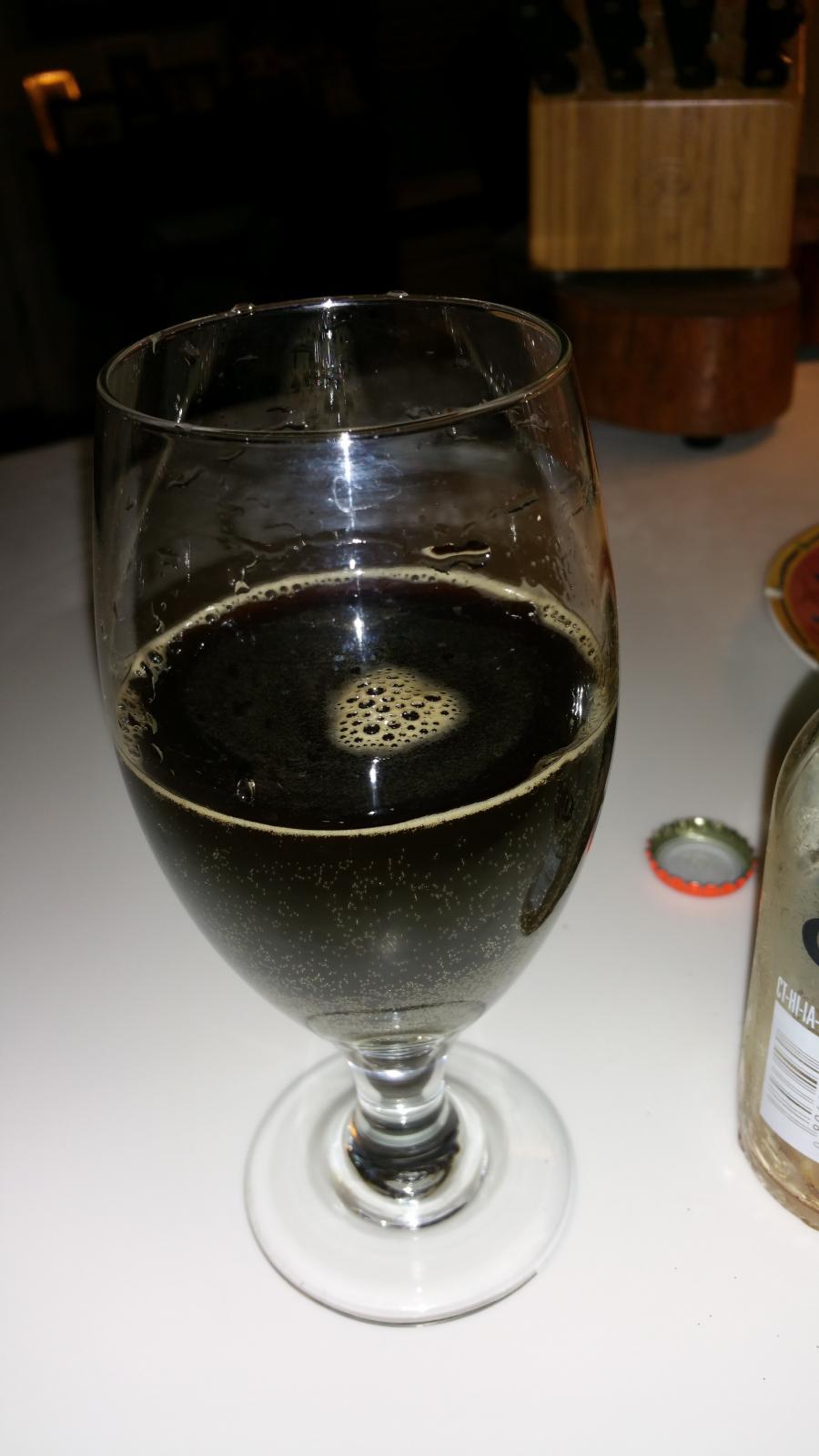I've been brewing about two years now. I have around 8 brews under my belt. My most ambitious brew is my Russian Imperial Stout brewed in June 2015. OG on this beer was 1.098. It spent 5 weeks in primary, then racked to secondary for another 5 weeks on a bourbon soaked oak spiral. Tasted about right, so time to bottle. FG was 1.026. Since it spent 10 weeks in fermentation, I decided to add one package of EC-1118 champagne yeast to the bottling bucket, in case the original yeast (S-04) was no longer viable. Not absolutely necessary, but I felt it was reasonable insurance. I had about 4 gallons of beer and wanted to carb to style, so I used 2.75 oz of corn sugar which should have gotten me to 2.0 volumes.
After over six weeks in the bottle and four days in the fridge, the attached pic was what I got from a vigorous pour. It's not flat, but there's certainly no head to speak of. I didn't want a huge head, but surely this is not what 2.0 volumes should look like, is it?
It sure seems as though I have plenty of yeast. The EC-1118 was properly hydrated before adding to the bottling bucket. Six weeks in the bottle in a dark closet at 75-78 degrees ought to be long enough for the beer to carb. So I must not have added enough sugar, right? I'm thinking of making a sugar solution, opening each bottle and adding it, then recapping. Good or bad idea? I have a lot of time and effort invested in this brew, and would like it to be at it's best. On the other hand, it certainly is drinkable the way it is. Not what I was hoping for, but still a very tasty RIS. And I'm planning to continue aging some of the bottles up to a year or more. Will more time help? Is there any downside to what I am considering? Any thoughts, analysis, or suggestions appreciated.

After over six weeks in the bottle and four days in the fridge, the attached pic was what I got from a vigorous pour. It's not flat, but there's certainly no head to speak of. I didn't want a huge head, but surely this is not what 2.0 volumes should look like, is it?
It sure seems as though I have plenty of yeast. The EC-1118 was properly hydrated before adding to the bottling bucket. Six weeks in the bottle in a dark closet at 75-78 degrees ought to be long enough for the beer to carb. So I must not have added enough sugar, right? I'm thinking of making a sugar solution, opening each bottle and adding it, then recapping. Good or bad idea? I have a lot of time and effort invested in this brew, and would like it to be at it's best. On the other hand, it certainly is drinkable the way it is. Not what I was hoping for, but still a very tasty RIS. And I'm planning to continue aging some of the bottles up to a year or more. Will more time help? Is there any downside to what I am considering? Any thoughts, analysis, or suggestions appreciated.




